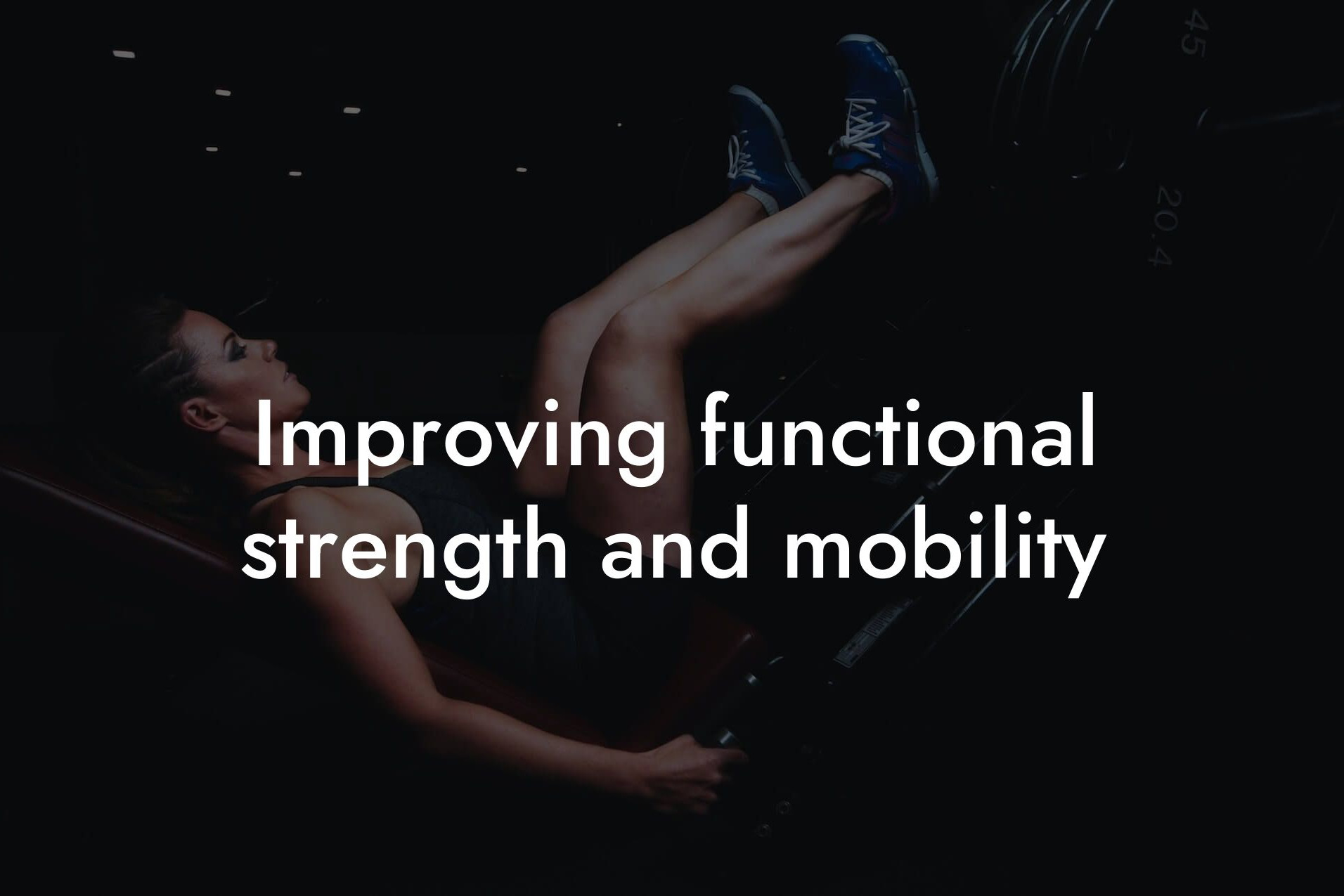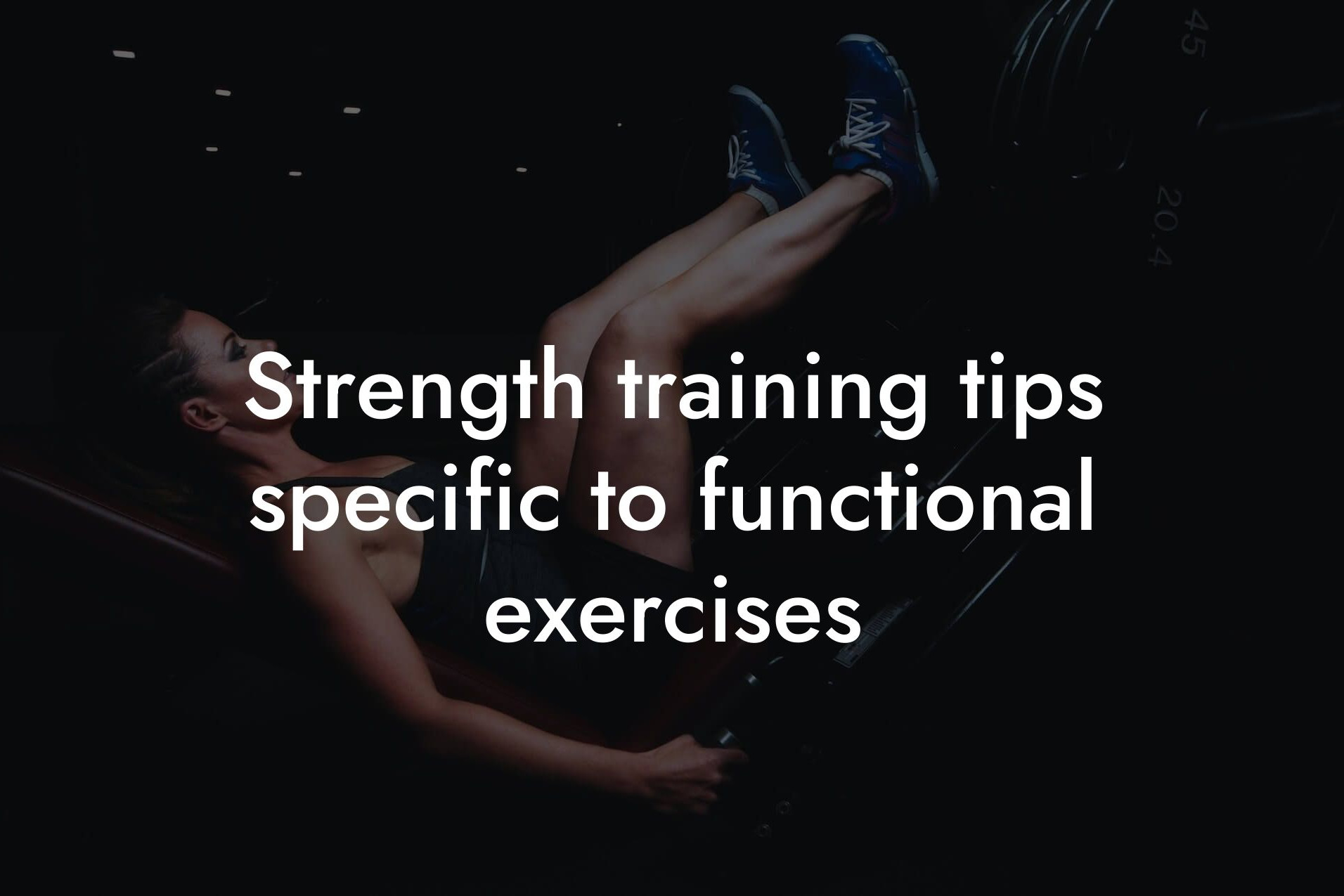As a high-earning professional, you understand the importance of maintaining a healthy and physically fit body. Not only does it boost your confidence, but it also enhances your overall well-being and energy levels, allowing you to tackle your busy schedule with ease. At Tano Performance Group, we believe that functional training is an essential component of achieving your fitness goals. In this article, we'll delve into the importance of balancing strength, speed, and flexibility in functional training and provide you with a comprehensive guide to help you get started.
Table of Contents
- What is Functional Training?
- Why is Balancing Strength, Speed, and Flexibility Important?
- The Importance of Strength in Functional Training
- The Role of Speed in Functional Training
- The Benefits of Flexibility in Functional Training
- How to Balance Strength, Speed, and Flexibility in Your Workout Routine
- Common Mistakes to Avoid in Functional Training
- Frequently Asked Questions
What is Functional Training?
Functional training is a type of exercise that focuses on improving your coordination, balance, and overall movement patterns. It involves performing exercises that mimic real-life movements, such as squatting, lifting, and twisting, to enhance your daily functioning and athletic performance. Unlike traditional weightlifting or cardio exercises, functional training exercises often engage multiple muscle groups simultaneously, making it an effective way to improve your overall fitness.
Why is Balancing Strength, Speed, and Flexibility Important?
Achieving a balance between strength, speed, and flexibility is crucial in functional training because it allows you to move efficiently and effectively in your daily life. Strength provides the foundation for movement, speed enables you to react quickly, and flexibility allows for a full range of motion. When one aspect is neglected, it can lead to poor performance, increased risk of injury, and decreased overall fitness.
The Importance of Strength in Functional Training
Strength is the foundation of functional training. It provides the power and endurance needed to perform daily tasks and athletic movements. Building strength through exercises such as squats, deadlifts, and lunges can help improve your overall muscle mass, bone density, and metabolism. A strong foundation also enables you to generate more force and speed, making it easier to perform complex movements.
The Role of Speed in Functional Training
Speed is an often-overlooked component of functional training. However, it's essential for reacting quickly to changing situations, whether it's dodging an obstacle or catching a ball. Incorporating speed exercises, such as agility drills and plyometrics, can help improve your reaction time, acceleration, and deceleration. This, in turn, can enhance your overall athletic performance and reduce your risk of injury.
The Benefits of Flexibility in Functional Training
Flexibility is often misunderstood as simply being able to touch your toes. However, it's much more than that. Flexibility refers to your range of motion, allowing you to move freely and efficiently. Incorporating flexibility exercises, such as stretching and mobility drills, can help improve your posture, reduce muscle tension, and enhance your overall athletic performance. Good flexibility also enables you to generate more power and speed, making it an essential component of functional training.
How to Balance Strength, Speed, and Flexibility in Your Workout Routine
Balancing strength, speed, and flexibility in your workout routine requires a thoughtful and structured approach. Here are some tips to help you get started:
- Incorporate a mix of strength, speed, and flexibility exercises in your workout routine.
- Start with compound exercises, such as squats and deadlifts, to build overall strength.
- Incorporate speed exercises, such as agility drills and plyometrics, 2-3 times a week.
- Make time for flexibility exercises, such as stretching and mobility drills, 2-3 times a week.
- Listen to your body and adjust your routine accordingly. If you're feeling tight or sore, focus on flexibility exercises. If you're feeling slow or sluggish, focus on speed exercises.
Common Mistakes to Avoid in Functional Training
When it comes to functional training, there are several common mistakes to avoid. These include:
- Focusing too much on strength and neglecting speed and flexibility.
- Incorporating exercises that are too complex or advanced for your fitness level.
- Not warming up or cooling down properly, leading to increased risk of injury.
- Not listening to your body and pushing through pain or discomfort.
Balancing strength, speed, and flexibility is essential for achieving optimal fitness and performance in functional training. By incorporating a mix of exercises that target each component, you can improve your overall fitness, enhance your athletic performance, and reduce your risk of injury. Remember to listen to your body, adjust your routine accordingly, and avoid common mistakes to get the most out of your functional training program. At Tano Performance Group, we're committed to helping you achieve your fitness goals through our comprehensive DEXA body assessment and personalized training programs. Contact us today to learn more.
By incorporating the principles outlined in this article, you'll be well on your way to achieving a balanced and functional fitness level that will serve you well in all aspects of your life. Remember, fitness is a journey, not a destination. Stay committed, stay consistent, and you'll be amazed at the results you can achieve.
Frequently Asked Questions
What is functional training, and how does it differ from traditional weightlifting?
Functional training is a type of exercise that focuses on building strength, speed, and flexibility to improve overall physical function and performance in daily life. Unlike traditional weightlifting, which often isolates specific muscle groups, functional training incorporates exercises that work multiple joints and muscle groups simultaneously, mimicking real-life movements and actions.
Why is balancing strength, speed, and flexibility important in functional training?
Balancing strength, speed, and flexibility is crucial in functional training because it allows individuals to perform daily tasks and activities with efficiency, power, and control. When one aspect is neglected, it can lead to imbalances, injuries, and decreased performance.
What are some common exercises used in functional training?
Some common exercises used in functional training include squats, lunges, deadlifts, burpees, jump squats, box jumps, and agility drills. These exercises often involve multi-planar movements, plyometrics, and dynamic stretching.
How can I incorporate functional training into my existing workout routine?
You can incorporate functional training into your existing workout routine by replacing traditional weightlifting exercises with functional exercises, adding plyometric and agility drills, or incorporating functional training days into your weekly routine.
What are the benefits of functional training for high-earning professionals?
Functional training is particularly beneficial for high-earning professionals because it improves overall physical function, increases energy levels, enhances mental focus and concentration, and reduces the risk of injury and chronic pain.
How does functional training improve bone density?
Functional training improves bone density by incorporating weight-bearing exercises, plyometrics, and resistance training, which stimulate osteogenesis and increase bone density.
Can functional training help with weight loss and body fat reduction?
Yes, functional training can help with weight loss and body fat reduction by increasing caloric expenditure, improving insulin sensitivity, and building lean muscle mass.
How often should I do functional training exercises?
Aim to do functional training exercises 2-3 times per week, with at least one day of rest in between. This allows for adequate recovery time and progressive overload.
What is the importance of flexibility in functional training?
Flexibility is crucial in functional training because it allows for optimal range of motion, reduces the risk of injury, and improves overall athletic performance.
How can I improve my flexibility through functional training?
You can improve your flexibility through functional training by incorporating dynamic stretching, mobility exercises, and plyometric drills into your routine.
What is the role of speed training in functional training?
Speed training is an essential component of functional training because it improves reaction time, acceleration, and deceleration, allowing individuals to perform daily tasks and activities with greater efficiency and power.
How can I incorporate speed training into my functional training routine?
You can incorporate speed training into your functional training routine by adding agility drills, shuttle runs, and plyometric exercises that focus on rapid contractions and relaxations.
What are some common mistakes to avoid in functional training?
Common mistakes to avoid in functional training include neglecting proper form and technique, overtraining, and failing to incorporate adequate recovery time and progressive overload.
How can I measure progress in functional training?
You can measure progress in functional training by tracking improvements in strength, speed, flexibility, and overall physical function, as well as monitoring changes in body composition and bone density.
Can functional training be modified for beginners or those with injuries?
Yes, functional training can be modified for beginners or those with injuries by reducing intensity, volume, and complexity, and incorporating exercises that are low-impact or non-weight-bearing.
How does functional training improve mental focus and concentration?
Functional training improves mental focus and concentration by increasing blood flow and oxygenation to the brain, releasing endorphins and neurotransmitters, and promoting a sense of accomplishment and confidence.
What are some common myths about functional training?
Common myths about functional training include the idea that it's only for athletes, that it's too intense or high-impact, and that it's not effective for building strength or improving body composition.
How can I find a qualified functional training coach or program?
You can find a qualified functional training coach or program by researching local gyms or studios, asking for referrals, and looking for certifications from reputable organizations such as the National Academy of Sports Medicine (NASM) or the American Council on Exercise (ACE).
What is the role of nutrition in functional training?
Nutrition plays a critical role in functional training by providing the necessary fuel for optimal performance, recovery, and muscle growth. A balanced diet that includes lean protein, complex carbohydrates, and healthy fats is essential for functional training.
How can I incorporate functional training into my busy schedule?
You can incorporate functional training into your busy schedule by finding a gym or studio with flexible hours, working with a personal trainer or coach, and incorporating functional training exercises into your daily routine, such as during lunch breaks or while traveling.
What are some common injuries associated with functional training?
Common injuries associated with functional training include overuse injuries, such as tendonitis and stress fractures, as well as acute injuries, such as sprains and strains. Proper form, technique, and recovery time can help reduce the risk of injury.
How can I prevent injuries in functional training?
You can prevent injuries in functional training by warming up and cooling down properly, incorporating injury prevention exercises, such as glute bridges and lateral walks, and listening to your body and taking regular breaks.
What is the role of recovery in functional training?
Recovery plays a critical role in functional training by allowing the body to repair and adapt to the physical demands of exercise. Adequate recovery time, including rest, stretching, and foam rolling, is essential for optimal performance and progress.
Here are some related articles you might love...
- Nutrition strategies for functional training enthusiasts
- Improving functional strength and mobility
- Strength training tips specific to functional exercises
- The importance of bone density in functional fitness
- Preventing injuries in functional training: A comprehensive guide
- Maintaining muscle recovery with functional training
- How DEXA scans can benefit functional training athletes
- The role of body composition in functional training performance
- Reducing body fat for better functional training results
Zak Faulkner
Zak Faulkner is a leading authority in the realm of physical health and body composition analysis, with over 15 years of experience helping professionals optimise their fitness and well-being. As one the experts behind Tano Performance Group, Zak has dedicated his career to providing in-depth, science-backed insights that empower clients to elevate their physical performance and overall health.
With extensive knowledge of DEXA technology, Zak specializes in delivering comprehensive body assessments that offer precise data on body fat, muscle mass, bone density, and overall physique. His expertise enables individuals to make informed decisions and achieve their fitness goals with accuracy and confidence. Zak’s approach is rooted in a deep understanding of human physiology, combined with a passion for helping clients unlock their full potential through personalised strategies.
Over the years, Zak has earned a reputation for his commitment to excellence, precision, and client-focused service. His guidance is trusted by top professionals who demand the best when it comes to their health. Whether advising on fitness programs, nutritional strategies, or long-term wellness plans, Zak Faulkner’s insights are a valuable resource for anyone serious about taking their health and fitness to the next level.
At Tano Performance Group, Zak continues to lead our Content Team revolutionising how professionals approach their physical health, offering unparalleled expertise that drives real results.




